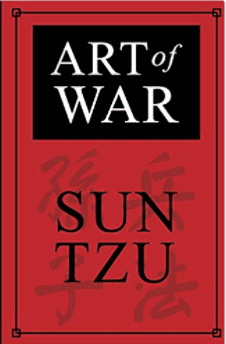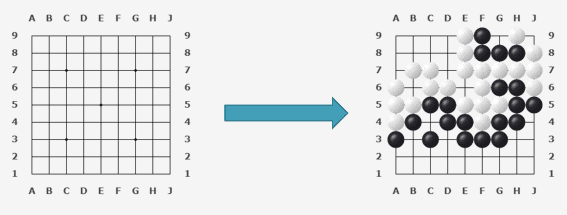
In business, we are always seeking guidance and direction. The complex nature of business leads us to look for frameworks and philosophies that will inform our decision-making.
During our classes, webinars, and presentations, we are often asked, “How did you apply the art of war in your business?”
We’ll discuss this topic here and how you can achieve success by applying these principles in your business.
Modern business strategy has its origins in military strategy. Understanding the business environment is crucial for identifying opportunities and navigating the competitive landscape. The essence of business is to prevail over your competition to win market share and increase profit. Most business transactions are a zero-sum game where one participant wins while the other loses.
As an example, let’s imagine you sell toasters. Very few customers want or need two toasters. So, once the sale is made, one seller wins, and everyone else loses.
Carl von Clausewitz was a Prussian general and military theorist. His most famous book, On War, focused on conflict's psychological and political aspects rather than traditional military strategy. “War is a clash between major interests….Rather than comparing it to art, we could more accurately compare it to commerce, which is also a conflict of human interests and activities.”
"War is a clash between major interests. Rather than comparing it to art we could more accurately compare it to commerce, which is also a conflict of human interests and activities ."
Sun Tzu was a Chinese general, strategist, philosopher, and author. He lived around 400 B.C. during a period known as The Age of the Warring States. People often ask, “Did Sun Tzu write Sun Tzu's The Art of War?” It is impossible to say for certain, but most historians believe him to be the original author.
His the Art of War has become a classic of military strategy. It is one of the best-selling -related books of all time, and MBA students around the world study it.
Unfortunately, the combination of arcane language and the challenge of translating military concepts into mercantile concepts makes the Art of War difficult to understand.
This is an ancient publication - people often ask, “What is the best translation of the Art of War?”
I prefer the translation by Lionel Giles Sun Tzu on the Art of War (London: Luzac & Co., 1910).
The Art of War is readily available on Amazon, or you can get a Sun Tzu Art of War pdf here. Finally, if you are looking for the Art of War summary, you can get it here.

One of Sun Tzu’s primary principles is to win without fighting. While this may seem counter-intuitive, an in-depth look at the concept reveals some elegant insights. In business, your competitors are not the enemy; understanding their strengths and weaknesses can help you develop strategies to outmaneuver them without confrontation. “Battles are dangerous affairs.” “He who struggles for victory with naked blades is not a good general.”
"Battles are dangerous affairs." "He who struggles for victory with naked blades is not a good general."Sun Tzu is not saying that you should not engage in conflict; you should not engage in battles that will result in heavy losses or destruction of the terrain. What’s the point of winning a battle where your army is decimated and the buildings, crops, and land are destroyed or severely damaged? Winning a battle such as this is a Pyrrhic victory (a victory that comes at great cost, perhaps making the ordeal to win not worth it).
The game of chess illustrates an excellent example. In chess, the object is to “take” the opponent’s king. “checkmate” comes from the Persian shah mat, meaning “the king is dead.”

At the beginning of a chess game, both sides have a full complement of pieces, each with representative abilities, strengths, and weaknesses. Each side loses pieces throughout a match until one side can “take” the other’s king. Indeed, a Pyrrhic victory, the board is littered with dead pieces, and one king has been captured.
Contrast this with the ancient Chinese game of Go. In a game of Go, each side works to capture terrain with his pieces. At the end of the game, the board is full of pieces, with the winner holding more terrain than the loser. While capturing an opponent’s pieces in Go by surrounding them is possible, this is a secondary objective to capturing and holding terrain.

The comparison between these games is an excellent illustration of the idea that there are different ways to win, and the superior way is usually to do so without direct conflict that results in loss of resources to win - a Pyrrhic victory.
As you plan your business strategies, seek to control most of the market (market share - or terrain in Sun Tzu’s lingo). You should seek to control this market share with the smallest possible investment of resources. Don’t attempt winning by destroying your competitor through endless fighting.
An excellent application is to use the Art of War for business management strategic planning. The principles outlined in the book are highly applicable to competitive business situations. Gaining a competitive edge requires strategic actions and leveraging market intelligence. Using these principles can help you develop more effective strategies in competitive business situations.
Using a business wargame to role-play various scenarios and outcomes can be a powerful way to use these principles in planning your strategy.
To win without fighting may require deception, subtlety, and other less obvious tactics. Asymmetric concepts like the effective use of agility (a strength of many small businesses) or competitive intelligence can also be effective winning methods. Being agile, slippery, unconventional, and employing unexpected actions can all be tools to win without fighting.
Is the Art of War still relevant - the sheer number of MBA students and military officers reading the book after thousands of years of history should answer that question with a resounding yes!
Blue Ocean Strategy is a book written in 2004 by W. Chan Kim and Renee Mauborgne, professors at INSEAD. The book's name is synonymous with the name of the marketing theory.
Blue Ocean Strategy simultaneously pursues differentiation and low cost to create new market space and demand. It is about creating and capturing uncontested market space, making the competition irrelevant. Implementing the Blue Ocean Strategy requires unique business skills, including strategic thinking and innovative planning.

This strategy concept is an approach to winning without fighting. Opening up a new market space and creating new demand are ways of growing revenue without engaging directly with your competition.
This is a big question and one that we can't fully address in this article, which is focused on the Art of War as a business guide.
But it is clear that the Art of War is a handbook on how to manage conflict, focus on strengths, and protect weaknesses. These are all good concepts for day-to-day life.
A careful reading of the Art of War will deliver many interesting insights into how to manage one's daily life and the interactions with family, friends, acquaintances, and enemies.
The principles and concepts of military strategy, both ancient ideas and more modern interpretations, can be very effective tools to design a business model that will win. A business leader must use strategic frameworks to design a business model that will win. How war affects business is not the book's point, but the principles espoused in The Art of War can be applied to any situation where competition or conflict is present.
Business leaders must understand the competition and adapt to changes to gain a competitive advantage.
Business competition is often asymmetric. Large companies with lots of resources compete with much smaller companies. Business is unfair. The only way for a smaller company to win is through the use of asymmetric strategies and tactics that use their strengths to exploit their adversaries' weaknesses.
The role of a business owner is to use asymmetric strategies to exploit their adversaries' weaknesses. Small business leaders must be smarter and stealthier to win battles with limited resources.
Finally, using business wargames and other competitive strategy development methodologies can help a company come up with powerful ideas for winning without fighting. Be sure to fully utilize your CRM and other tools to keep track of your progress.
Asymmetric , led by former Army Delta Force operator and corporate executive, Mark Hope , can help you implement these ideas in your business. You can contact Mark by email at mark.hope@asymmetric.pro, or by telephone at +1 866-389-4746, or you can schedule a complimentary strategy discussion by clicking here . You can read all of his articles on Medium .